





















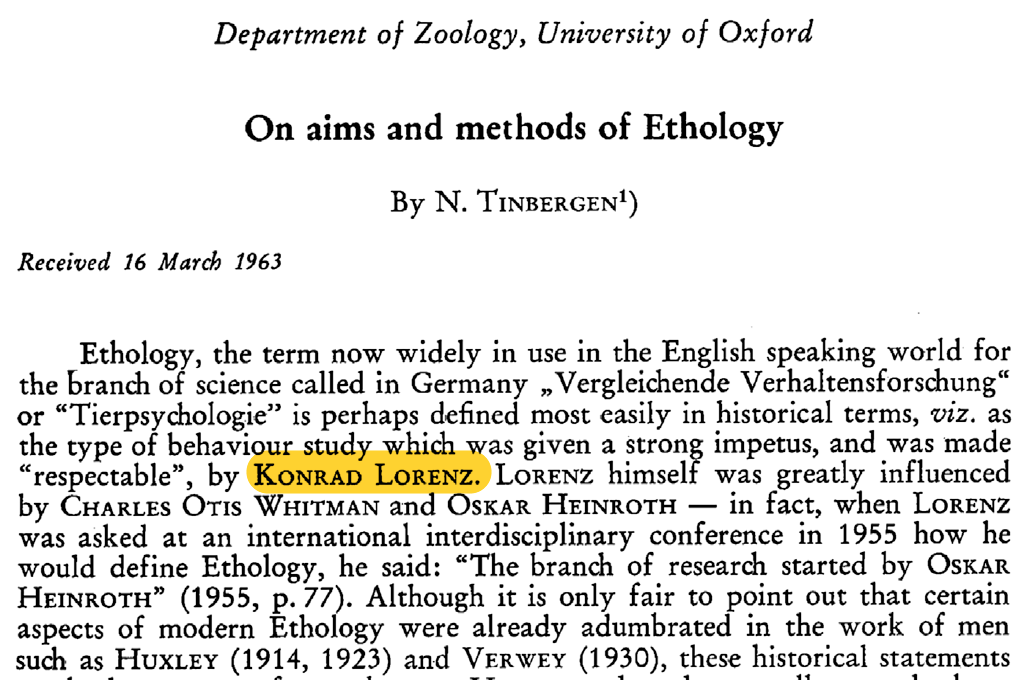
Tinbergen's famous "four questions" that need to be answered so that a particular behavior can be fully understood (the first three are Huxley's "three major problems of biology"):

Tinbergen's famous "four questions" that need to be answered so that a particular behavior can be fully understood (the first three are Huxley's "three major problems of biology"):
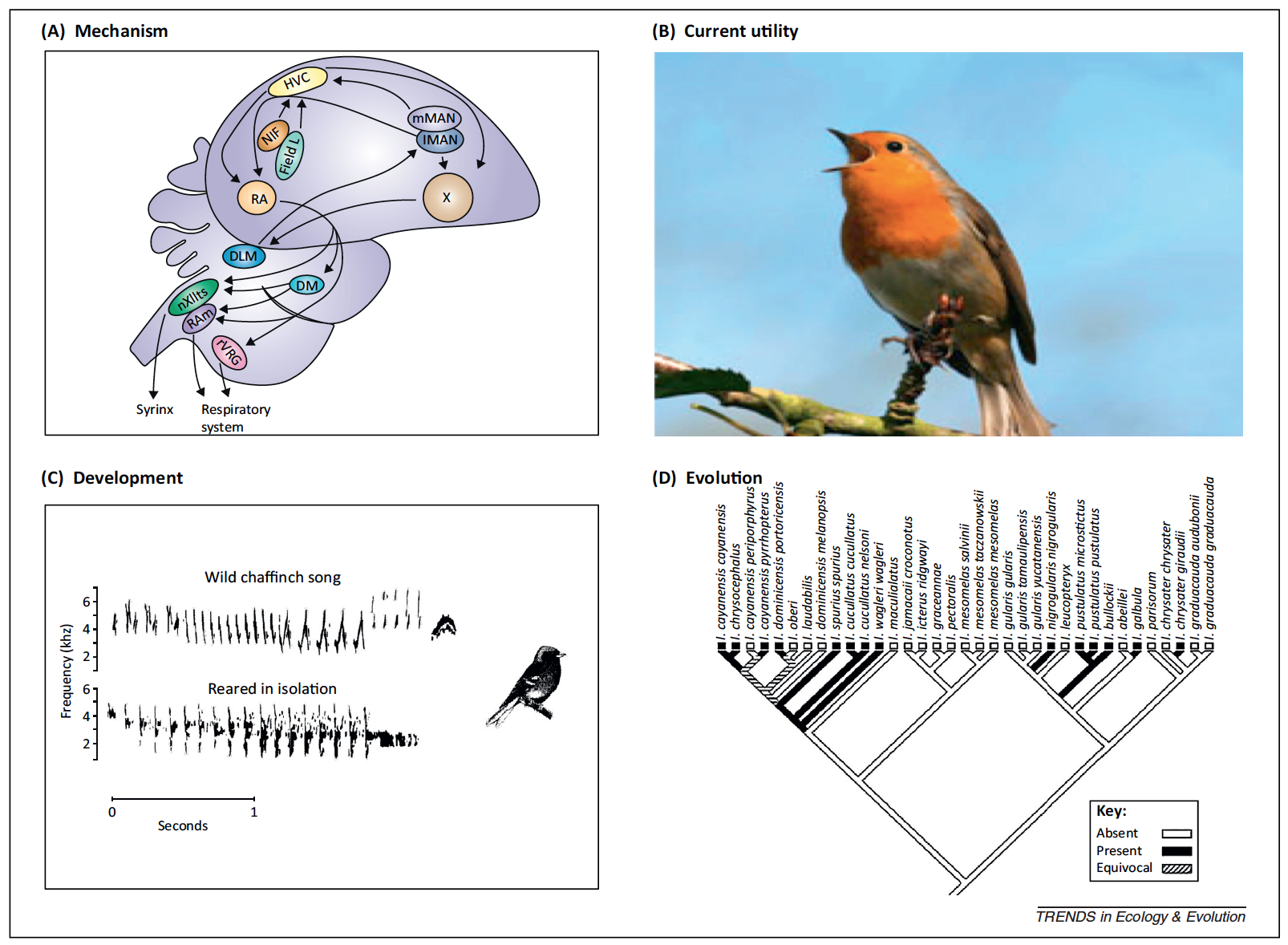
"Despite Tinbergen's emphasis on the need for an integrated understanding, in few study systems have all four of Tinbergen's questions been addressed. One such system is bird song."
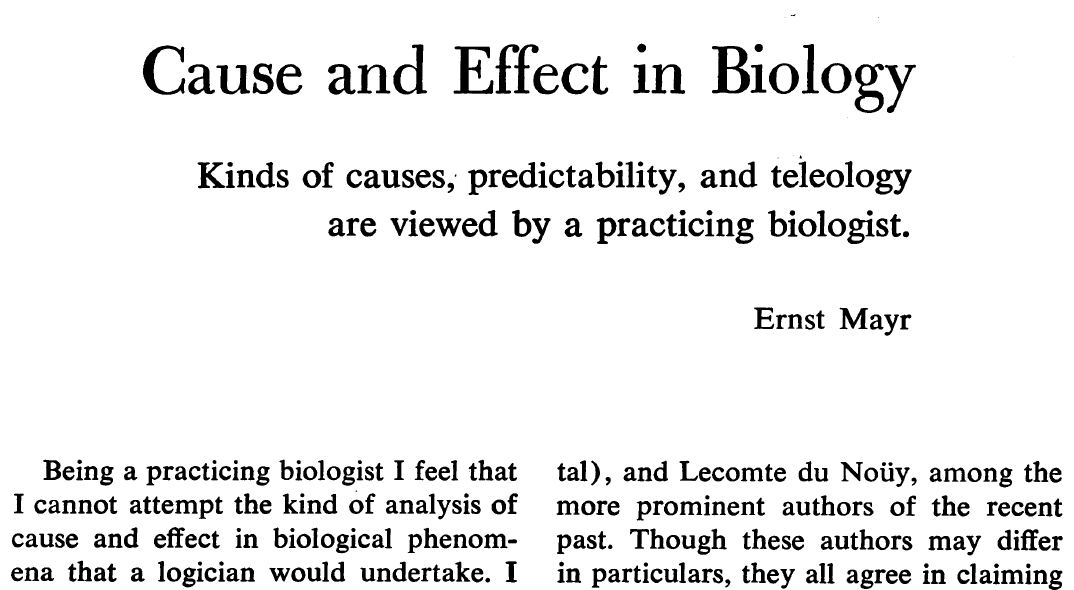
Functional biology. The functional biologist is vitally concerned with the operation and interaction of structural elements, from molecules up to organs and whole individuals. His ever-repeated question is "How?" How does something operate, how does it function?
Evolutionary biology. The evolutionary biologist differs in his method and in the problems in which he is interested. His basic question is "Why?" When we say "why" we must always be aware of the ambiguity of this term. It may mean "how come?," but it may also mean the finalistic "what for?" It is obvious that the evolutionist has in mind the historical "how come?" when he asks "why?"
What is the cause of bird migration? Or more specifically: Why did the warbler in my summer place in New Hampshire start his southward migration on the night of the 25th of August?
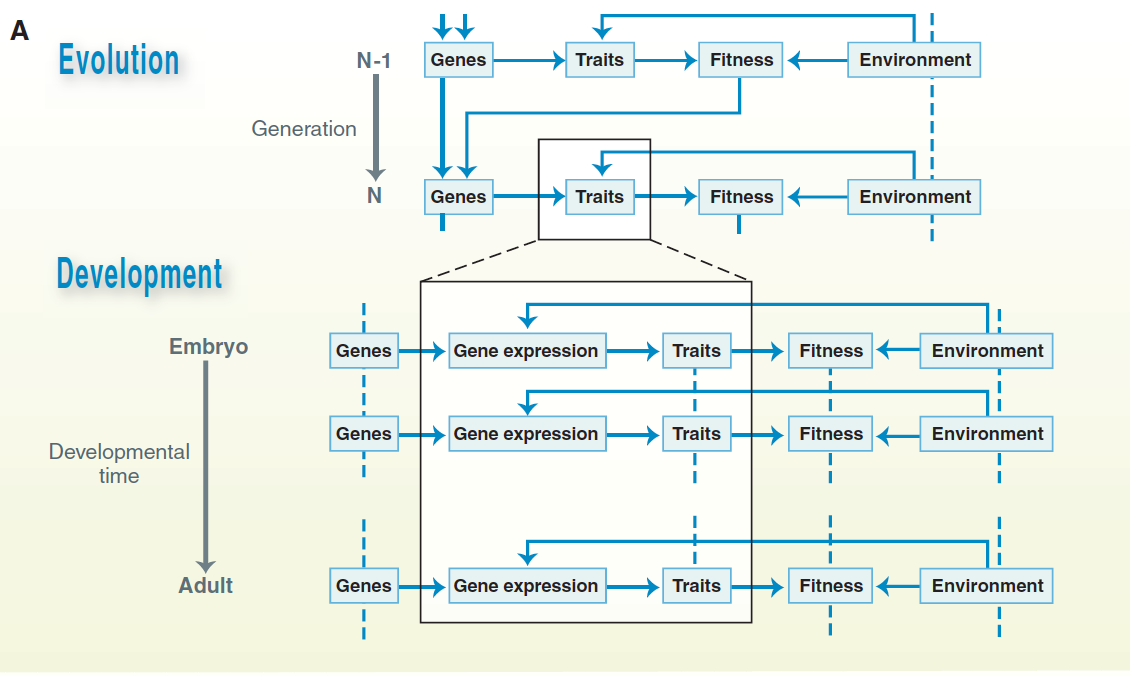
Graphs depicting the causal pathways involved in the evolution and development of traits.
Arrows represent possible causal influences; dashed lines represent features that persist over time.
(A) Ernst Mayr's (1961) perspective.
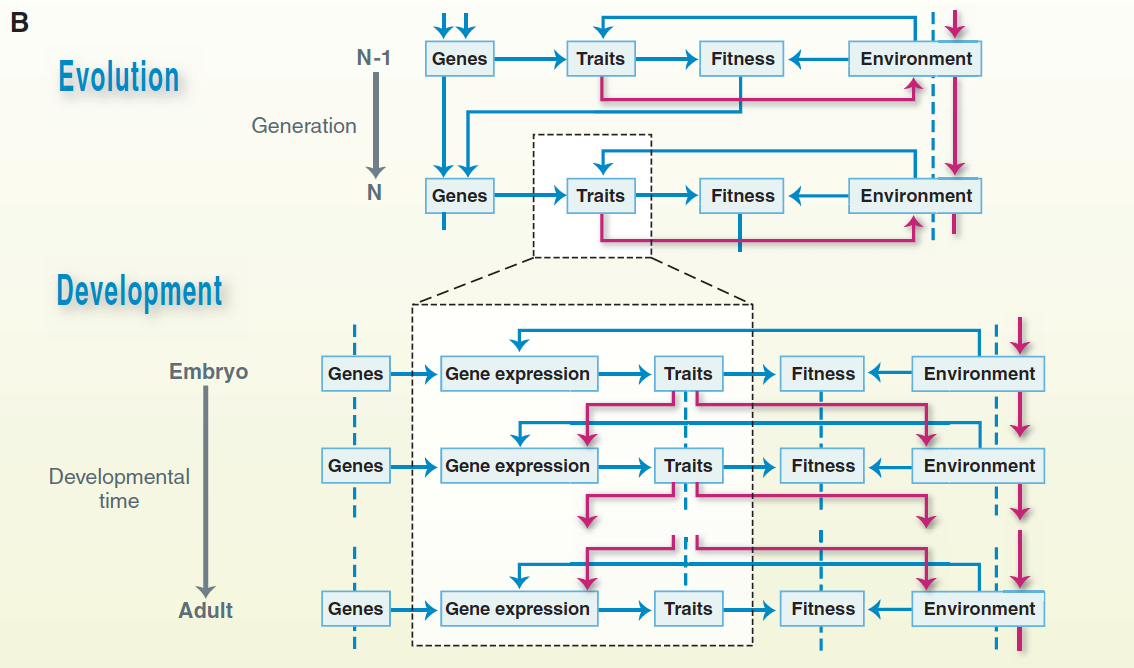
(B) A modern developmental perspective.
Red arrows denote additional causal influences relative to (A) recognized by fields such as evo-devo and niche construction theory.
During development, features of the trait cause changes in both gene expression and environment, which feed back to the developmental process, resulting in a different trait in the adult and modifications of both developmental and selective environments. Development cannot be considered purely proximately causal because it results in additional causal pathways from the trait in one generation to the trait in future generations.
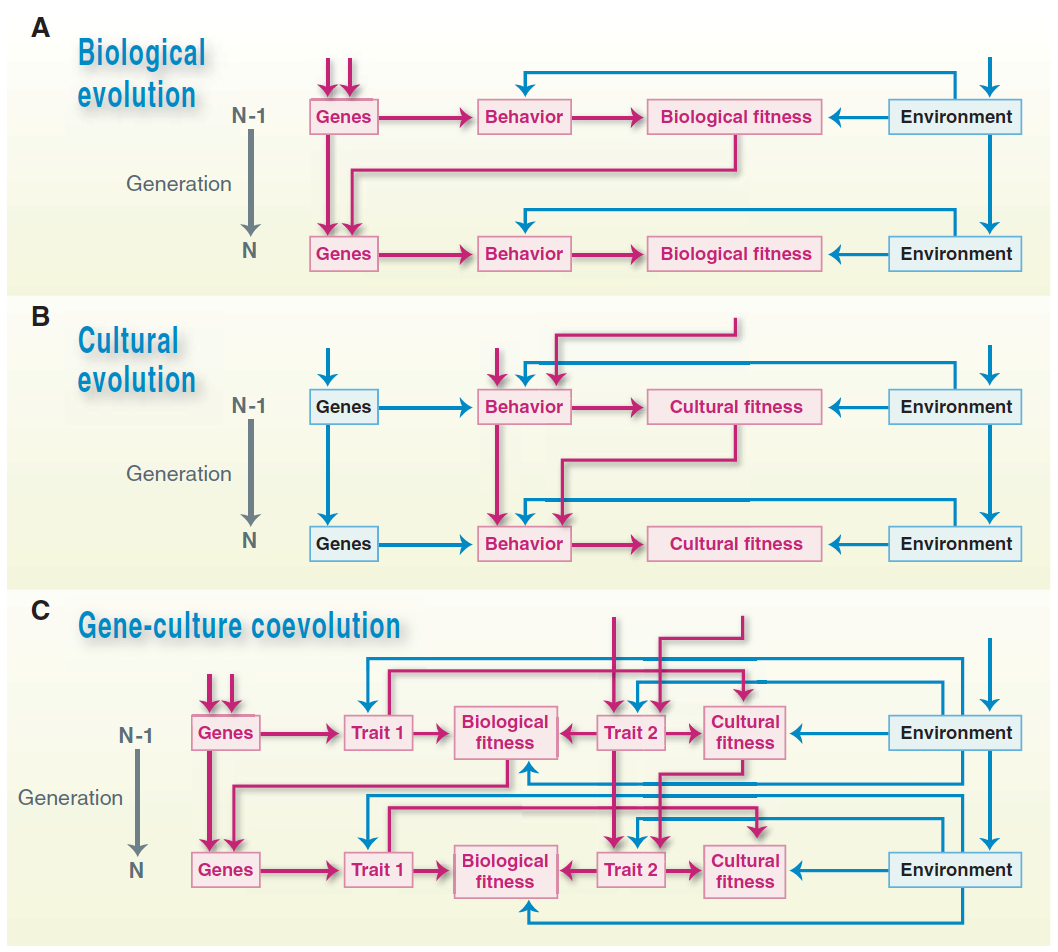
Alternative [= parallel] evolutionary processes.
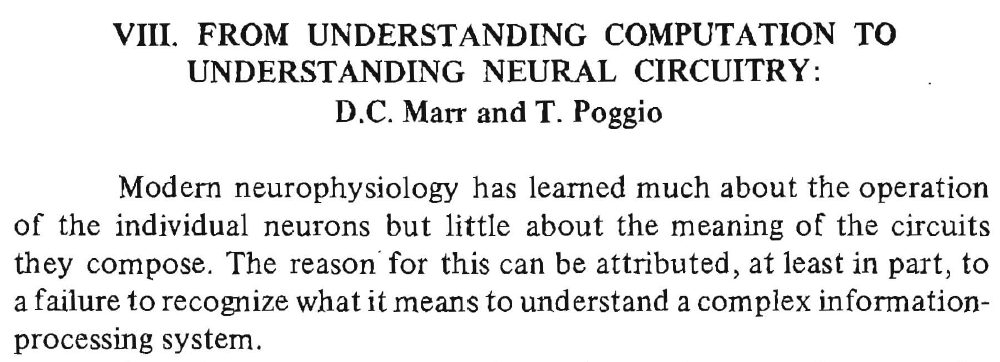
"Complex systems cannot be understood as simple extrapolations of the properties of their elementary components. [...] The core of the problem is that a system as complex as a nervous system or a developing embryo must be analyzed and understood at several different levels."
"Complex systems cannot be understood as simple extrapolations of the properties of their elementary components. [...] The core of the problem is that a system as complex as a nervous system or a developing embryo must be analyzed and understood at several different levels." For a system that solves an information processing problem, we may distinguish these levels:
[HARDWARE]
At the lowest, there is basic component and
circuit analysis — how do
transistors,
neurons,
diodes,
and synapses work?
[MECHANISMS]
The second level is that of particular
mechanisms:
adders,
multipliers, and memories accessed by address or
by content.
[ALGORITHM]
The third level is that of
the algorithm, and ...
[COMPUTATION]
... the top level contains the theory of the
overall computation.
"In general, mechanisms are strongly determined by hardware, the nature of the computation is determined by the problem, and the algorithms are determined by the computation and the available mechanisms."
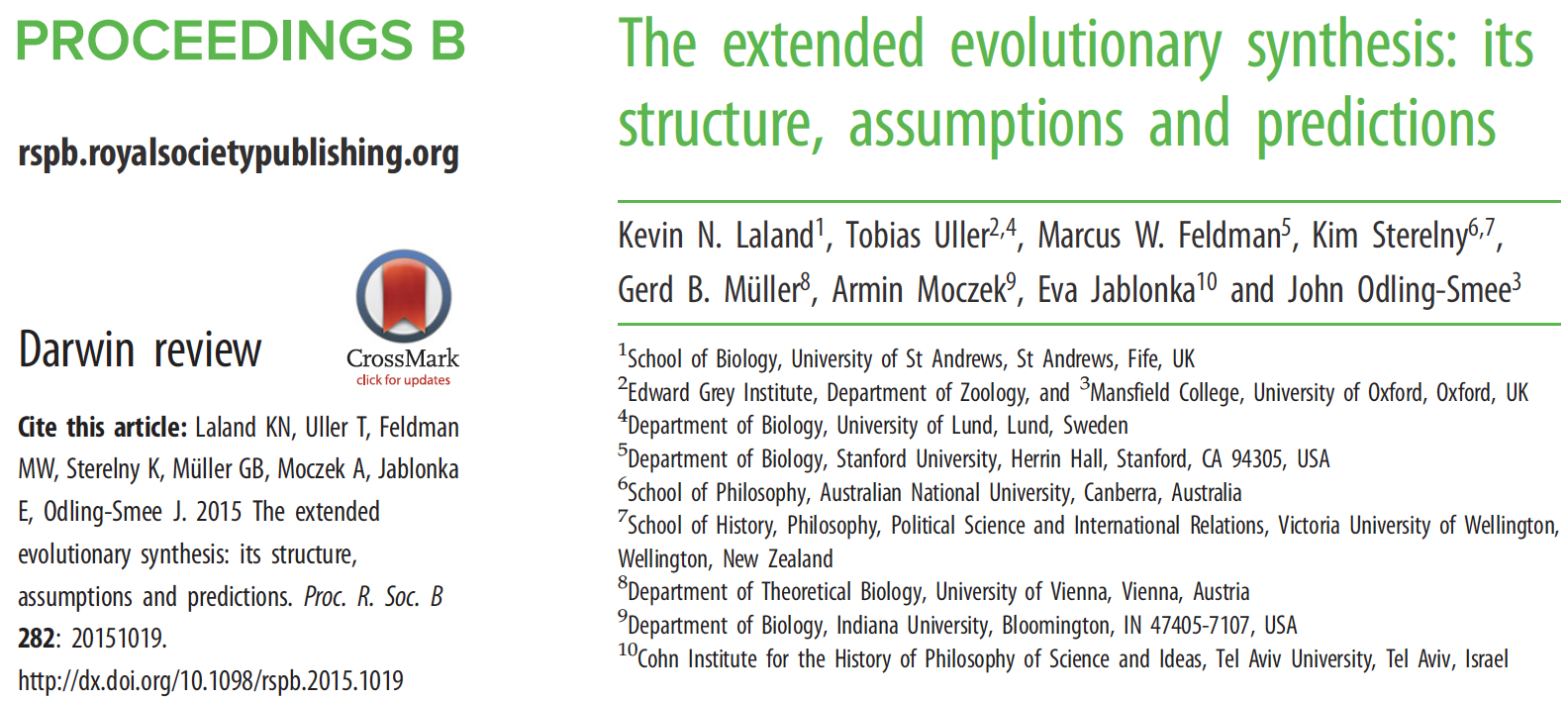
"Extended Evolutionary Synthesis (EES), retains the fundaments of evolutionary theory, but differs in its emphasis on the role of constructive processes in development and evolution, and reciprocal portrayals of causation.
In the EES, developmental processes, operating through developmental bias, inclusive inheritance and niche construction, share responsibility for the direction and rate of evolution, the origin of character variation and organism-environment complementarity. We spell out the structure, core assumptions and novel predictions of the EES, and show how it can be deployed to stimulate and advance research in those fields that study or use evolutionary biology."
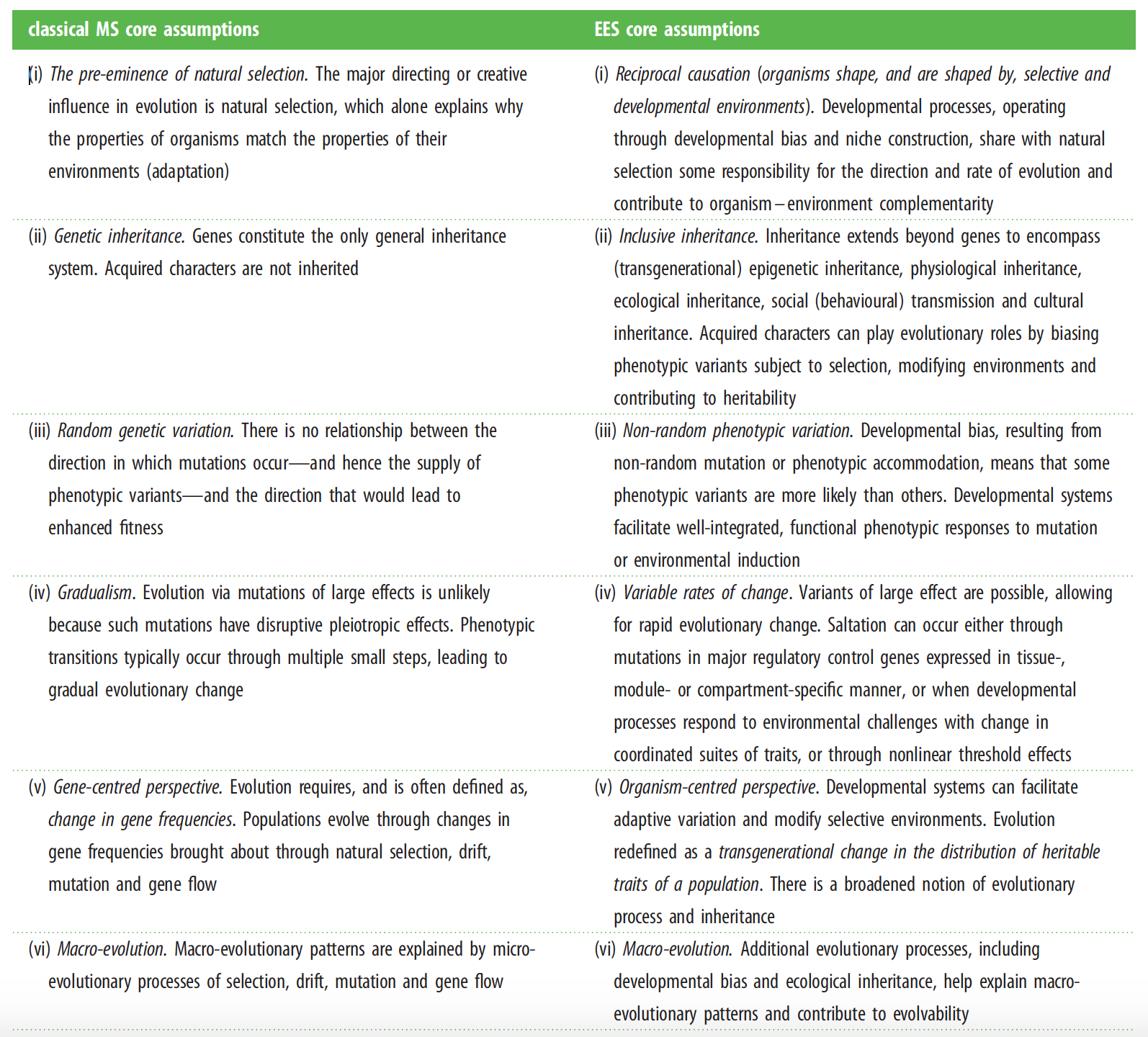
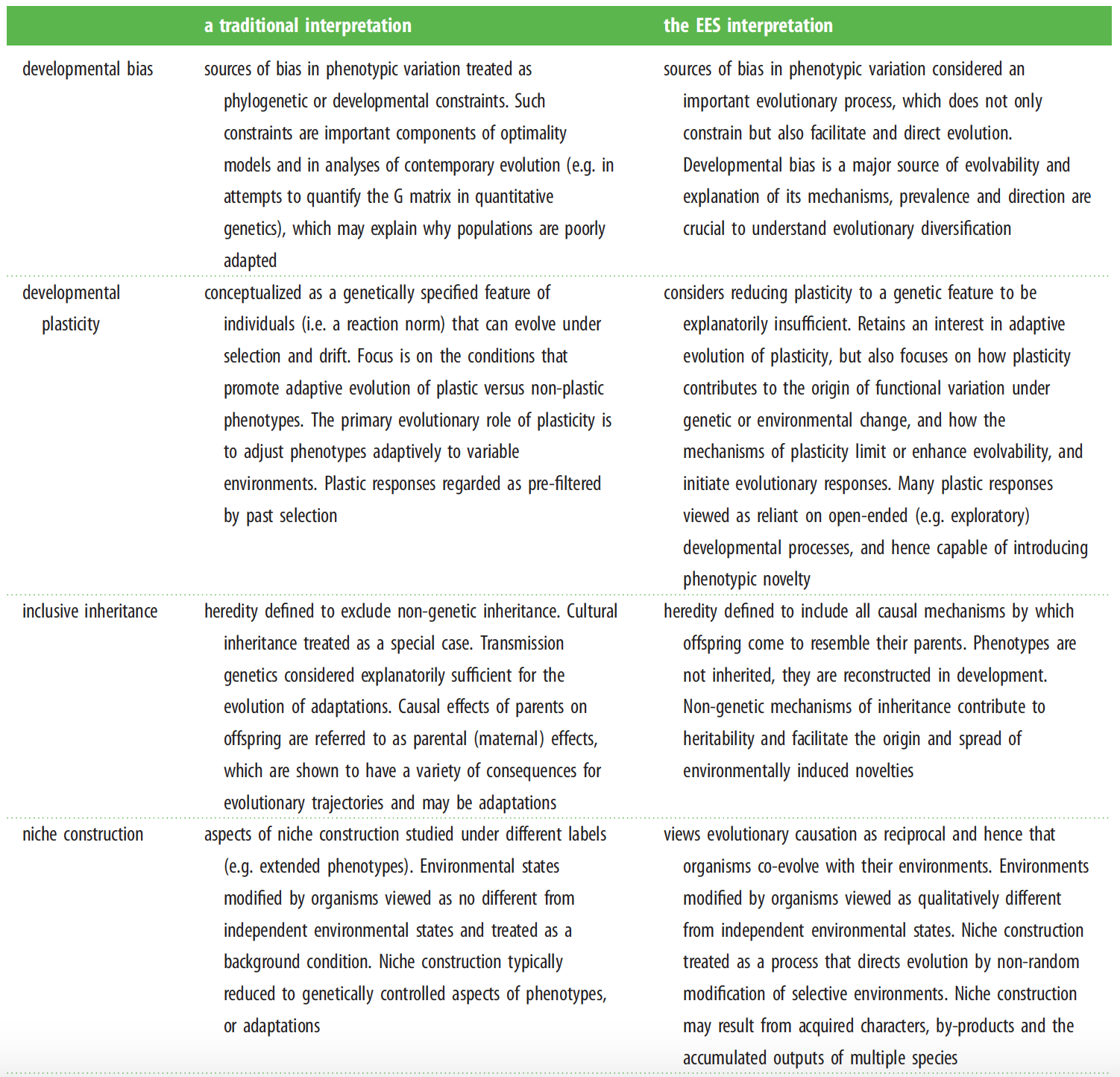
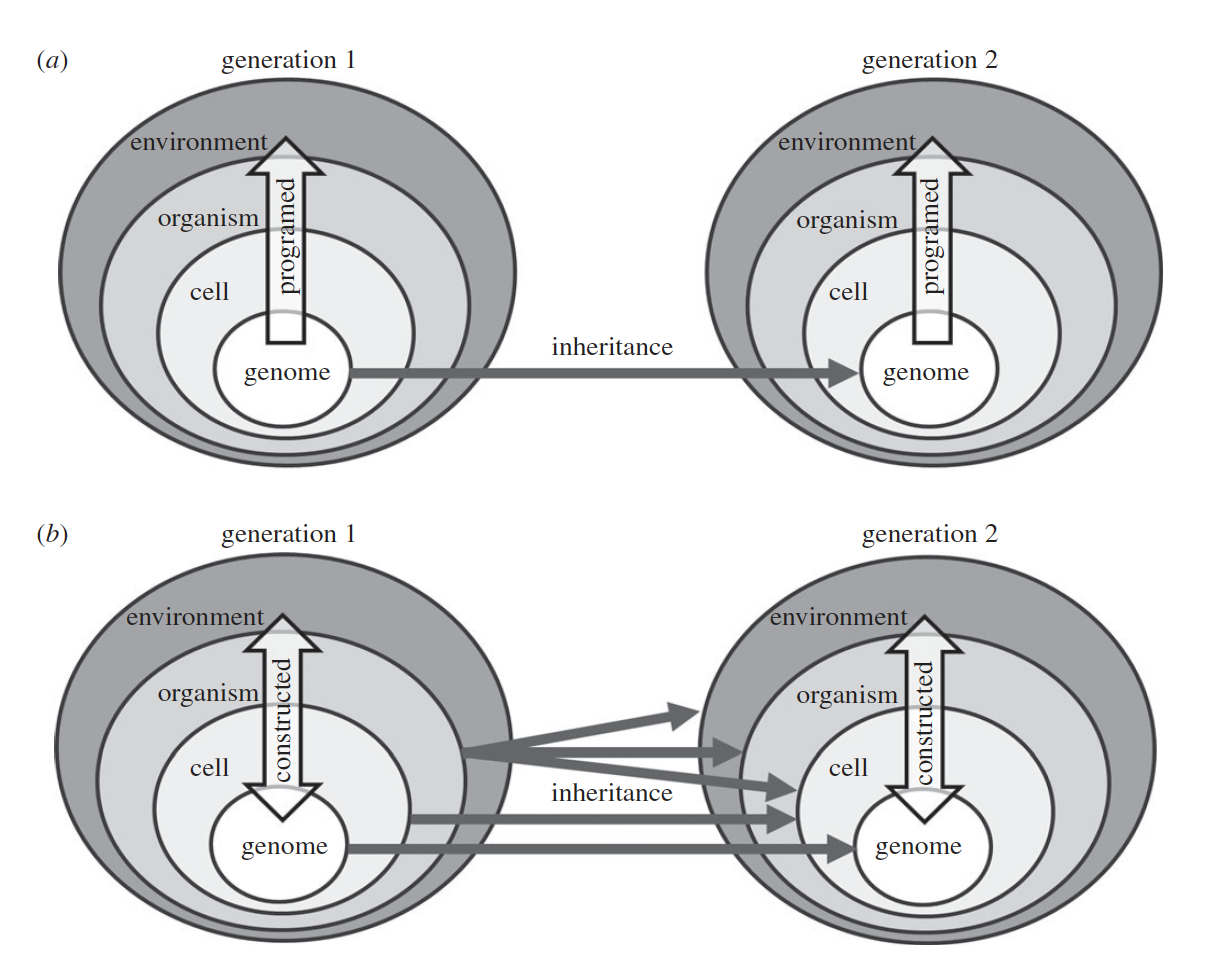
(a) Programed development. Traditionally, development has been conceptualized as programed, unfolding according to rules and instructions specified within the genome. DNA is ascribed a special causal significance, and all other parts of the developing organism serve as ‘substrate’, or ‘interpretative machinery’ for the expression of genetic information.
(b) Constructive development. By contrast, in the EES, genes and genomes represent one of many resources that contribute to the developing phenotype. Causation flows both upwards from lower levels of biological organization, such as DNA, and from higher levels downwards, such as through tissue- and environment-specific gene regulation. Exploratory and selective processes are important sources of novel and evolutionarily significant phenotypic variation. Rather than containing a ‘program’, the genome represents a component of the developmental system, shaped by evolution to sense and respond to relevant signals and to provide materials upon which cells can draw.
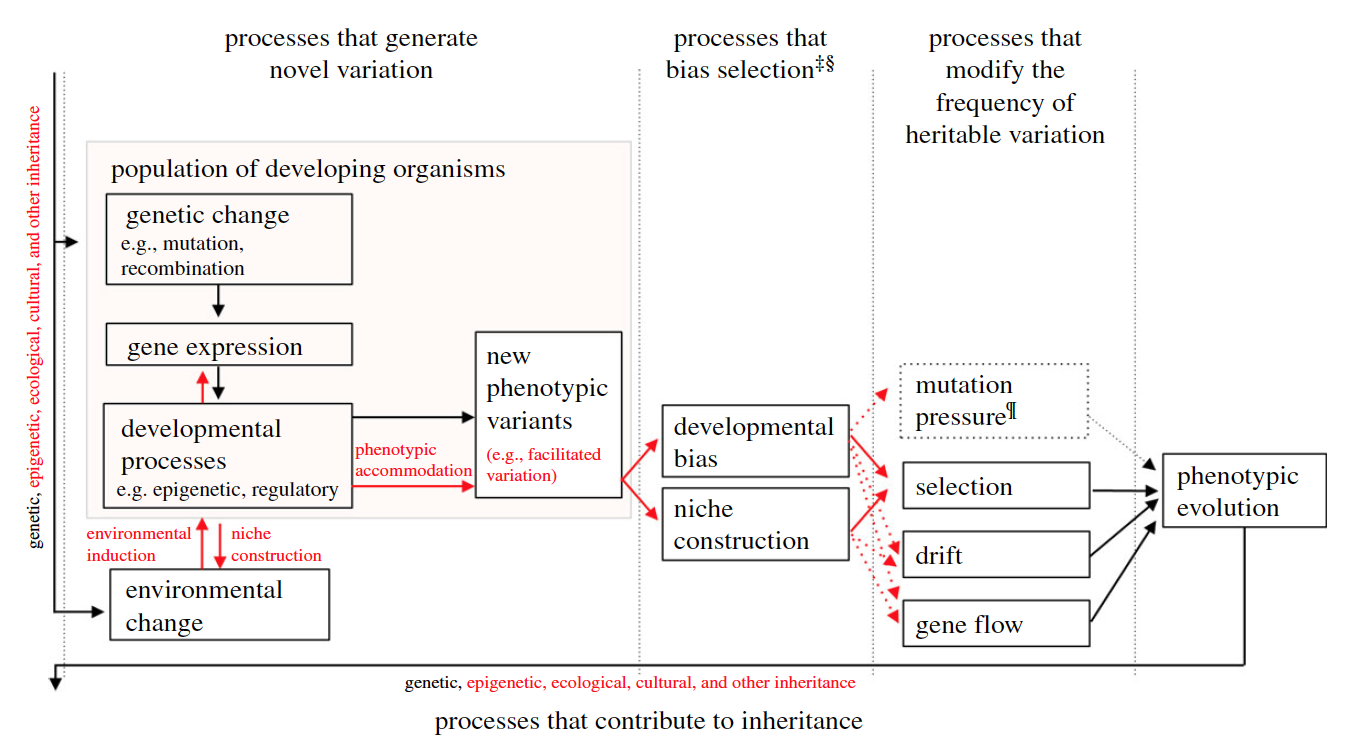
¶ Mutation pressure refers to the population-level consequences of repeated mutation, here depicted as dashed because mutation is also represented in ‘processes that generate novel variation’.
‡ In the EES, this category of processes will often need to be broadened to encompass processes that modify the frequencies of other heritable resources.
§ Developmental bias and niche construction can also affect other evolutionary processes, such as mutation, drift and gene flow.
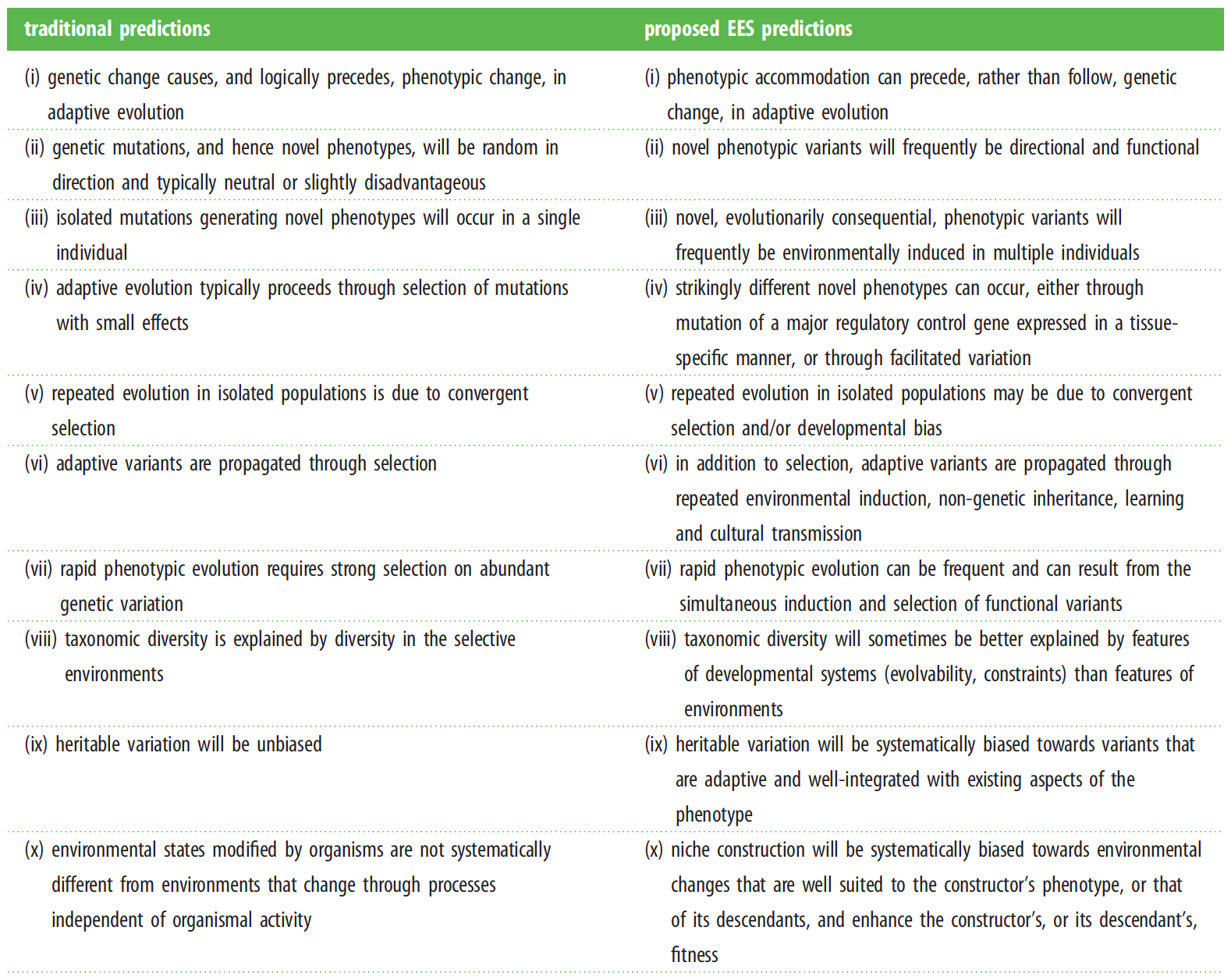
"A further benefit [of EES] comes from strengthening ties to adjacent disciplines, such as ecology [76,143,144], or the human sciences, including archaeology, biological anthropology, developmental psychology, epidemiology, and economics [145–150], where some of these ideas are already starting to have an impact.
Moreover, other advances in biology potentially take on new significance within the EES. For instance, the emphasis on inclusive inheritance potentially gives multi-level selection even greater significance, as selection can operate on all forms of heritable variation.
Another case is genome evolution, where horizontal gene transfer in prokaryotes, and genetic transfer from endosymbionts in eukaryotes [151], can be understood as part of a broader suite of phenomena with the propensity to propagate horizontally (e.g. social transmission, ecological inheritance). The recognition that genome change is an active cell-mediated physiological process that responds to challenging life-history events [152] fits neatly with the EES’s treatment of plasticity.
The EES perspective may also facilitate implementation of approaches from computer science that enable mathematical representation of complex dynamic systems, such as connectionist models of memory and learning applied to model genotype to phenotype relations [153]."



"Two aspects of animal life impressed me most during the journeys which I made in my youth in Eastern Siberia and Northern Manchuria. One of them was the extreme severity of the struggle for existence which most species of animals have to carry on against an inclement Nature; the enormous destruction of life which periodically results from natural agencies; and the consequent paucity of life over the vast territory which fell under my observation. And the other was, that even in those few spots where animal life teemed in abundance, I failed to find — although I was eagerly looking for it — that bitter struggle for the means of existence, among animals belonging to the same species, which was considered by most Darwinists (though not always by Darwin himself) as the dominant characteristic of struggle for life, and the main factor of evolution."
[Read all of it here.]
Questions?
Last modified: Mon Feb 22 2021 at 09:45:17 EST